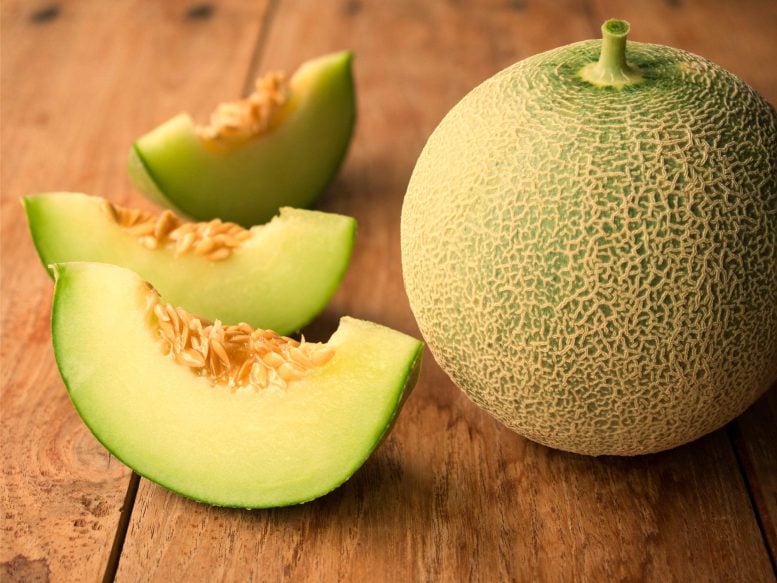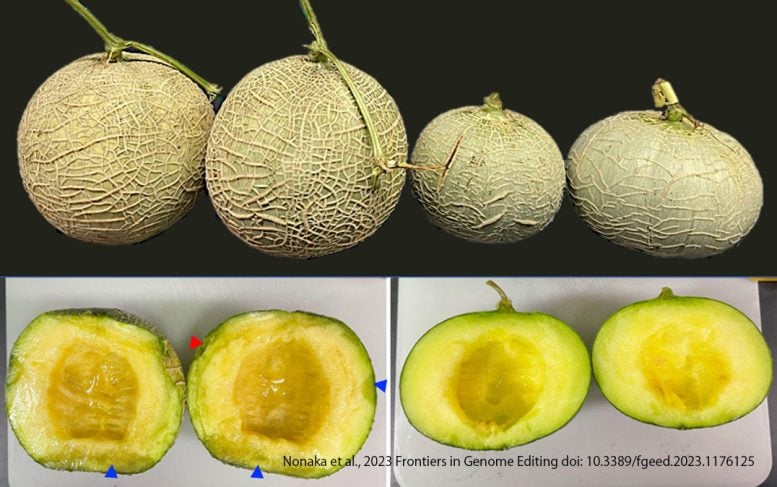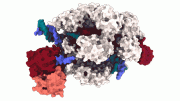
Through CRISPR/Cas9 gene editing, researchers extended the shelf life of a Japanese melon by reducing ethylene production via the CmACO1 gene, an inheritable change that doesn’t introduce foreign genes.
The plant hormone ethylene, in its gaseous state, has long been recognized for its ability to hasten fruit ripening and has a notable impact on shelf-life. In a recent study, scientists used the CRISPR/Cas9 system for gene editing to modify the ethylene production pathway in the luxury Japanese melon (Cucumis melo var. reticulatus “Harukei-3”) to increase its shelf-life.
Their findings were recently published in the journal Frontiers in Genome Editing.
The enzyme 1-aminocyclopropane-1-carboxylic acid oxidase (ACO) is associated with the final step of the ethylene production pathway and has multiple homologous genes. The research group has previously demonstrated five CmACO genes (homologous genes of ACO) in the melon genome and shown that the CmACO1 gene is predominantly expressed in the harvested fruit.

Melon fruits 14 days after harvest (stored at 25°C). Credit: University of Tsukuba
Therefore, the researchers expected that CmACO1 would be an important gene for enhancing the preservation of the melon fruit. In this study, they selected CmACO1 as a target of gene editing and attempted to introduce mutations in the gene. Consequently, the harvested melons exhibited no foreign genes and the mutations induced were inherited for at least two generations.
In the non-gene-edited line (wild type), ethylene generation was observed in the fruit 14 days postharvest, the rind turned yellow, and the flesh softened. However, in the genome-edited mutant, ethylene generation was reduced to one-tenth of that in the wild type, with the skin color remaining green and the fruit remaining firm. This indicates that introducing CmACO1 mutation via gene editing enhanced the shelf life of the melons. The results of this study indicate that gene editing can contribute to food loss reduction and improve food security.
Reference: “Targeted modification of CmACO1 by CRISPR/Cas9 extends the shelf-life of Cucumis melo var. reticulatus melon” by Satoko Nonaka, Maki Ito and Hiroshi Ezura, 25 May 2023, Frontiers in Genome Editing.
DOI: 10.3389/fgeed.2023.1176125
This work was supported by Cross-ministerial Strategic Innovation Promotion Program (SIP), “Technologies for Smart Bio-industry and Agriculture ” (funding agency: Bio-oriented Technology Research Advancement Institution) to HE.









The idea may have value. But the industry already has a serious problem with melons that do not ripen properly. It isn’t a melon problem. It’s a distribution industry problem. Someone needs to engineer a solution to that.